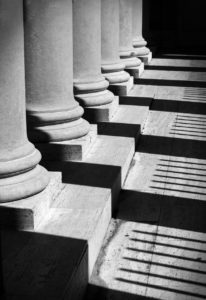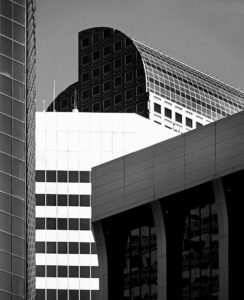All structures are ordered, but to the casual observer it may take a second, more detailed look to see and appreciate the order. Line and form are evident in the architecture, the structural elements of buildings. There is the purposeful design created by the architect/engineer for functional and visual satisfaction. And there is also the unintended design. This design results from the viewer seeing an intermingling of designed elements or isolating portions of elements in such a way that a new formation of line and form seems to emerge. Unfortunately what frequently happens is that we are so contained in them or overwhelmed by their size or numbed by familiarity we tend to miss the beauty and the simplicity of the geometry.
Common structural features such as doors, windows, and stairs are very recognizable for their functional nature. But there’s more to them. Simply put: doors are interesting. They raise questions: What’s behind them? Where do they lead?
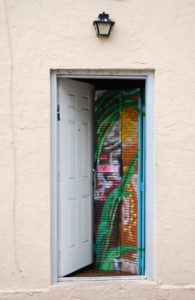 They lure us in, usher us out, stop us in place. Some are solitary; some have neighbors. They have character. In the same vein, windows are eyes in the facade, sometimes welcoming us in or out, sometimes confusing us with a veil of reflection. Sometimes they give us a hint of what’s on the other side or just stare blankly.
They lure us in, usher us out, stop us in place. Some are solitary; some have neighbors. They have character. In the same vein, windows are eyes in the facade, sometimes welcoming us in or out, sometimes confusing us with a veil of reflection. Sometimes they give us a hint of what’s on the other side or just stare blankly.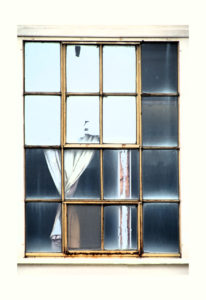 Stairs are pure line and form structures. They appear quiet and orderly. And they are stored energy. They “move” us. We’re compelled to follow the neatly patterned zig-zag, the predictable form. In so doing, we’re visually transported up and down or cast into far depths.
Stairs are pure line and form structures. They appear quiet and orderly. And they are stored energy. They “move” us. We’re compelled to follow the neatly patterned zig-zag, the predictable form. In so doing, we’re visually transported up and down or cast into far depths.
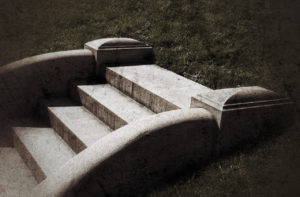 And then there are lines — and the geometric shapes they create. They are different sizes, stand-alone, embedded, at times not readily discerned without a second look. I find the linear patterns simply riveting.
And then there are lines — and the geometric shapes they create. They are different sizes, stand-alone, embedded, at times not readily discerned without a second look. I find the linear patterns simply riveting.
